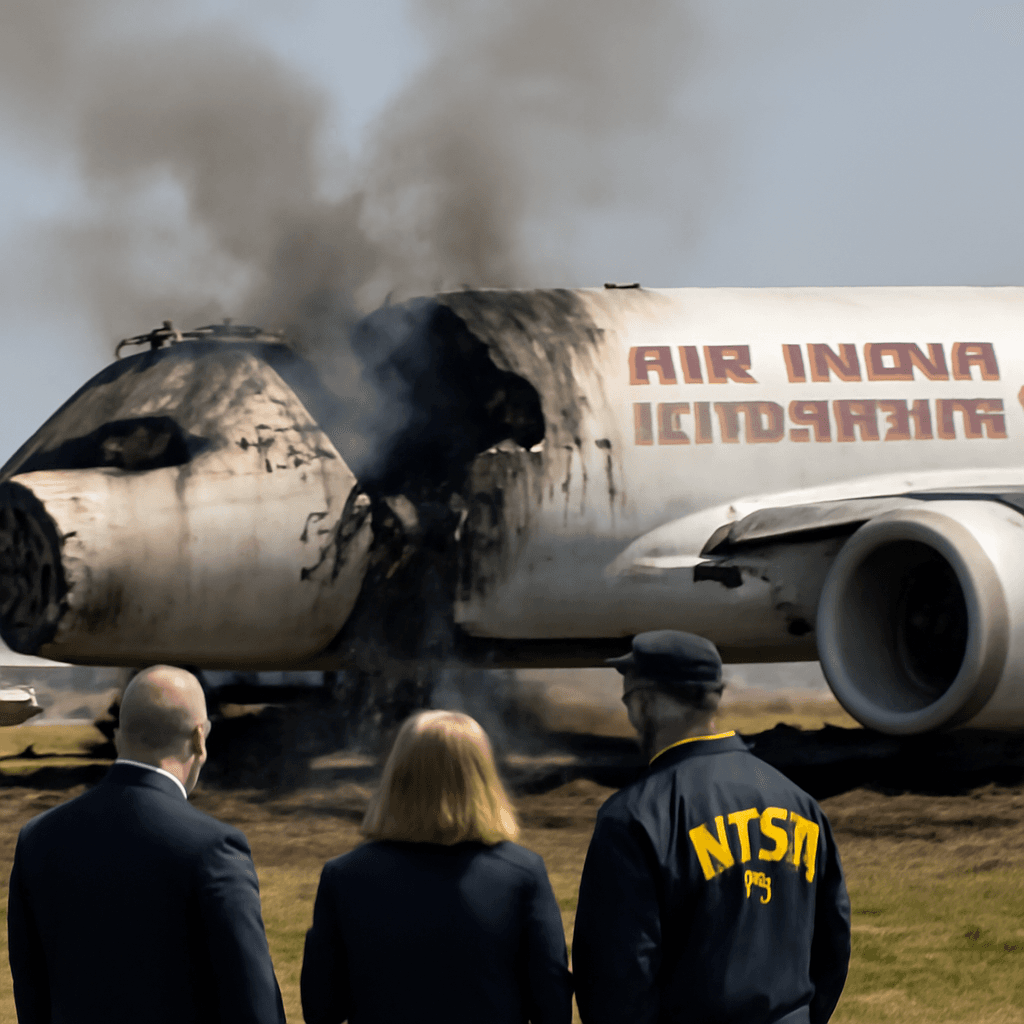Early Investigation Unmasks Sudden Engine Fuel Cutoff in Air India 787 Crash
In a startling revelation that adds complexity to last month’s tragic Air India Boeing 787 crash near Ahmedabad, India, investigators have uncovered that both engines experienced an almost simultaneous fuel cutoff mere seconds after takeoff. The preliminary report, released on July 11, 2025, by India's Aircraft Accident Investigation Bureau (AAIB), sheds light on the key technical anomaly but leaves critical questions open, highlighting the challenges aviation investigators face in unraveling disaster causes.
What Happened Seconds After Takeoff?
The report indicates that approximately three seconds after the Dreamliner lifted off, the aircraft’s engine fuel cutoff switches flipped from the “run” to “cutoff” position. This immediate action effectively starved the engines of fuel, causing a loss of thrust and leading the plane to rapidly lose altitude and crash.
According to cockpit voice recordings retrieved from the plane's black boxes, one pilot questioned the other about who had cut off the fuel supply. The other pilot denied making the switch. However, the report does not clarify which pilot spoke or who issued the urgent distress calls just before impact.
Experienced Pilots, Yet Unanswered Questions
Notably, both pilots were highly experienced professionals, collectively possessing nearly 19,000 flight hours, including over 9,000 hours specifically on Boeing 787 aircraft. This experience deepens the mystery behind what triggered the fuel cutoff—whether it was human error, mechanical malfunction, or an unknown factor.
Experts Weigh In: Anomalies and Aviation Norms
- Fuel Switch Sensitivity: U.S. aviation safety specialist John Cox emphasized that the fuel cutoff switches on a Boeing 787 are designed to resist accidental movement. ‘‘You can’t just bump them and have them flip,’’ Cox remarked, indicating the switches require deliberate action.
- Unexplained Movements: Anthony Brickhouse, another U.S. aviation safety expert, raised foundational questions about the nature of the switch movement—did the switches move mechanically on their own, or were they actuated by a pilot? ‘‘If a pilot triggered this, understanding the motive is critical,’’ he stated.
Flipping these switches abruptly cuts engine power. Typically, such an action occurs under emergency scenarios like engine fire or after landing, not during a routine takeoff. The report did not reveal any indication of an engine fire or system failure that would justify this response.
Black Boxes Provide Crucial but Incomplete Data
The black boxes recovered from the wreckage combined cockpit voice recordings with flight data, offering insights into parameters like altitude, airspeed, and crew interactions before the crash. Although this data anchors the investigation, the full causal chain remains elusive, with further analysis underway.
Regulatory and Industry Responses
India’s AAIB has refrained from issuing immediate directives to Boeing or GE Aerospace regarding the Boeing 787 and its GEnx-1B engines. Given the incident’s severity, this cautious approach underscores the need for thorough investigation before action.
Meanwhile, Air India faces mounting scrutiny following this tragedy. The European Union Aviation Safety Agency (EASA) has announced plans to review operations of Air India Express, the budget arm of the carrier, after revelations of delayed engine part replacements and falsified compliance records for Airbus A320 aircraft. India’s Directorate General of Civil Aviation (DGCA) has also flagged Air India for multiple safety violations, including overdue safety equipment checks and breaches in pilot duty regulations.
Looking Ahead: Implications for Aviation Safety
With the aviation world watching closely, the National Transportation Safety Board (NTSB) chair, Jennifer Homendy, has urged the Indian authorities toward full transparency to bolster global aviation safety standards. The complexities unearthed in this preliminary report prompt urgent questions:
- Could cockpit ergonomics or human factors contribute to inadvertent switch activation?
- Are there latent technical vulnerabilities in the Boeing 787’s engine control systems?
- How can pilot training and cockpit design evolve to prevent such critical errors?
- What systemic oversight reforms are necessary for airlines operating in rapidly growing aviation markets like India?
Editor’s Note
This initial report unearths a troubling facet of the incident: the sudden and unexplained cutting off of fuel to both engines just after takeoff. It spotlights the intersection of human factors, technology design, and rigorous regulatory oversight in aviation safety. While experienced aviators commanded the flight, the sequence of events suggests deeper questions about cockpit design and emergency protocols. As the full investigation unfolds over the coming months, stakeholders must remain vigilant in using these lessons to enhance flying safety worldwide.



















